Methodology Proposal and 3D Model Creation of a Car Steering Wheel
Abstract
1. Introduction
- CAD (computer-aided design) that includes computer-aided styling (CAS), computer-aided aesthetic design (CAAD), computer-aided conceptual design (CACD);
- CAM (computer-aided manufacturing) that includes NC (numerical controlled) and CNC computer numerical controlled);
- CAE (computer-aided engineering) that includes FEA (finite element method) and CFD (computational fluid dynamics);
- PLM (product lifecycle management);
- PDM (product data management).
2. Methodology of Vehicle Steering Wheel Creation
- preparatory phase of the proposal for the vehicle steering wheel creation;
- phase of virtual modeling.
2.1. Preparatory Phase of the Proposal for the Vehicle Steering Wheel Creation
2.1.1. Definition of Dimensional Characteristics
- the outer diameter was determined in the interval 37–39 cm;
- the total height was determined in the interval 9–12 cm;
- handle circumference was determined in the interval 10–10.9 cm.
2.1.2. Defining the Number of Steering Wheel Assembly Members
2.1.3. Selection of Software Application
- The design of both the lower and upper parts will be complex and will likely consist of advanced curve-based volumetric geometry generation functions. It will be necessary to create a number of spatial curves and planar sketches that will form the basis of the surfaces. The surfaces will additionally be smoothed by means of further so-called control curves in order to achieve a smooth transition. When volume is added, the desired shape is achieved without sharp edges with smooth transitions between different geometric shapes.
- The virtual steering wheel model will consist of 5, 6 or 7 components, which requires the creation of an assembly. Within the new assembly, the other parts of the assembly should be created using dependent geometry (reference axes, planes, points, curves, which will create the so-called skeleton model) in a top-down design style, ensuring that, in case of any major change to the geometry, the designer will be alerted to the dependent geometry and will not make modeling mistakes. Top-down design is a process that progresses from a high-level design concept to a lower level. The high-level design concept is larger, broader and more general. The lower-level design concept is smaller, more specific and detailed.
- In order to personalize the assembly according to the customer’s requirements, it will be necessary to create a so-called generic model. The generic model allows you to select model parameters (dimensions, texts, elements of different kinds) that will vary. The values of these parameters are entered in the table so that one generic model becomes, for example, twenty virtual models. Such virtual models can be opened and written to disk, or they can be inserted into an assembly and written to disk by saving the assembly. The method of creating generic models saves time but requires the experience of the designer.
- SOLIDWORKS—The software is intuitive, simple and designed to make the designer’s work as easy as possible. Around 200 novelties are programmed each year, most of which have been created specifically on the initiative of users. It includes tools not only for 3D design but also for data management, simulations, electrical designs, plastic simulations, product inspection and CAM machining, thus covering the entire spectrum from development to production. Software license is charged [27].
- CATIA—The software offers a wide range of solutions integrated into one environment for all aspects and disciplines. It covers the areas of product design and development, working in 3D based on a single database, interfacing with PLM systems, supporting production without drawings, ensuring collaboration in teams and optimizing technological processes. Software license is charged [28].
- FreeCAD—It is an open-source 3D program with an intuitive interface that suits even beginners. This feature-based software can also be used by professionals, for example, for architectural or engineering projects. The software license is free [29].
- Creo Parametric—The software allows you to create complex 3D models and work on 2D or 3D complex surfaces, designs and model assemblies. It includes a variety of powerful tools adapted to the production environment. The software is widely used in many industries, including automotive. Software license is charged [30].
- Siemens NX—The software enables complex product development from product design, through simulations, CNC machine programming and measurement machine programming. In addition, it allows you to store company know-how, check compliance with company standards and, in conjunction with Teamcenter, track and manage the entire product life cycle. Software license is charged [31].
- RHINO—The software is professional and is used in many different industries. However, it is challenging for beginners. It allows you to work on parametric or non-parametric modeling. However, for parametric modeling, it is necessary to add the Grasshopper plugin. Software license is charged [32].
- Fusion 360—The software is not a fully parametric modeling software. It can be used for both explicit and parametric modeling, which is why it is classified as a polyvalent program. It is based on web-cloud technologies. It enables 3D modeling of parts and assemblies, direct editing of volumetric and large-scale models, their analysis, visualization, publishing, production (CAM), simulation, data management and online collaboration with colleagues, suppliers or customers. Software license is charged [33].
- INVENTOR—The software allows you to create, document and simulate objects, including their measurements, assumed movements and assembly. Once the design is created, communication with stakeholders is possible thanks to a shared view in the cloud and the possibility of real-time commenting. Software license is charged [34].
2.2. Phase of Virtual Modeling
2.2.1. Modeling of Individual Parts of the Steering Wheel
- 1.
- Assembly model
- 2.
- Bottom part
- 3.
- Top part
- 4.
- Central ornament
- 5.
- Right upper ornament
- 6.
- Left upper ornamentThe left_upper_ornament model with the file extension *.prt can be created in several ways:
- Full dependence on the original model—is to create a mirror model of the right_upper_ornament model with the new name left_upper_ornament. This model cannot be modified. A parent–child relationship is created, where left_upper_ornament is the child. The modification can only be transferred to the parent model and the change will be reflected in both models.
- Partial dependence on the original model—is the creation of a mirror model of the right_upper_ornament model with a new name left_upper_ornament, which can be partially modified based on predefined rules. The modification can be transferred to both models, with the change being reflected based on the defined rules.
- Full dependence on the original model with the addition of the required shapes. A simple example is engraved text. The requirement is to have different texts on the right and left ornaments, but the geometry of the shape should remain the same and dependent. The principle of creation is as follows: a mirror model of the right_upper_ornament part is created with a new name, left_upper_ornament. Then, elements for adding or removing material in the form of text are added to both the right and left ornament; each text can be edited separately.
- Complete independence from the original model—is the creation of a mirror model, right_upper_ornament, with a new name, left_upper_ornament, which is completely independent. However, if the original model is changed, new model will not change, so such a creation is unsatisfactory.
- 7.
- Right lower ornament
- 8.
- Left lower ornament
2.2.2. Assigning Colors to Individual Parts
- Single color number 1—the color will copy the color of the vehicle’s dashboard. The vast majority of cars have a black dashboard and steering wheel. Bottom_part and top_part models will belong in this group.
- Two-color—will be assigned according to the design of the central_ornament model and its color range will match the customer’s requirements and also the color range of suiTable 3D printing materials.
- Single color number 2—should complement the color of the central ornament and thus complete the desired but unobtrusive complex color effect. This group includes left_upper_ornament and right_upper_ornament models.
- Single color number 3—should complement the color of the central ornament to provide the desired but unobtrusive color effect. It is assumed to be a different color than in single color number 1. This group includes left_lower_ornament and right_lower_ornament models.
3. Creation of a 3D Design for the Steering Wheel
3.1. Creation of the Assembly Model
3.2. Creation of the Bottom Part
 ). Activating a model at the assembly level opens up new modeling possibilities and allows you to create geometric features by writing them into the activated model. The result is a model created at the assembly level. The usual procedure is to create a model with the file extension *.prt and then insert it into the assembly using relevant constraints.
). Activating a model at the assembly level opens up new modeling possibilities and allows you to create geometric features by writing them into the activated model. The result is a model created at the assembly level. The usual procedure is to create a model with the file extension *.prt and then insert it into the assembly using relevant constraints.3.3. Creation of the Top Part
3.4. Creation of the Central Ornament
- does not affect the strength of the steering wheel;
- meets the customer’s ideas of design;
- fills the circular hole on the top part;
- in its center, there is a protrusion for insertion into the model of the top part;
- does not exceed a specified height.
3.4.1. Central Ornament—Angel
3.4.2. Central Ornament—Cross
3.4.3. Central Ornament—Horse
3.4.4. Central Ornament—Flower
3.5. Creation of the Right Upper Ornament
3.6. Creation of the Left Upper Ornament
3.7. Creation of the Right Lower Ornament
3.8. Creation of the Left Lower Ornament
3.9. Assigning Colors to Individual Models
- 1.
- The bottom_part and the top_part are monochromatic, mostly black, as they match the color of the vehicle dashboard. Their models are shown in Figure 18.
- 2.
- The central ornament is two-colored. Figure 19 shows all four models, with three in two-color variants.
- 3.
- Right_upper_ornament and left_upper_ornament are monochromatic and their color adds to the complexity of the color effect. We chose the colors as follows: on the central ornament, one color is always dominant, represented in a higher proportion, and the other color is in a minor proportion. For the right and left upper ornament, we have chosen the minority color. Figure 20 shows the color variations in the upper right ornament only (the left ornament is identical in color; only the text differs), complementing the colors of the central ornaments. The models are shown with visible edges for better visibility of the text.
- 4.
- Right_lower_ornament and left_lower_ornament are monochromatic and their color adds to the complexity of the color effect. We have chosen the colors as follows: on the central ornament, one color is always dominant, represented in a higher proportion, and the other color is in a minor proportion. For the right and left bottom ornament, we have chosen the majority color. Figure 21 shows the color variants of the lower right ornament only (the left ornament is identical in color; only the text differs), complementing the color of the central ornament. The models are shown with visible edges for better visibility of the text.
4. Future Challenges
- Selection of suitable material for 3D printing;
- Virtual simulations of model strength with selected materials;
- Optimization of the model based on the results;
- Selection of a suiTable 3D printer according to the type of material, color variability and printing area;
- 3D printing of the prototype;
- Mechanical tests of material samples.
5. Conclusions
- Bottom_part;
- Top_part;
- Central_ornament, which had four variants;
- Right_upper_ornament;
- Left_upper_ornament;
- Right_lower_ornament;
- Left_lower_ornament.
Author Contributions
Funding

Institutional Review Board Statement
Informed Consent Statement
Data Availability Statement
Acknowledgments
Conflicts of Interest
References
- Dankwort, C.W.; Weidlich, R.; Guenther, B.; Blaurock, J.E. Engineers’ CAx education—It’s not only CAD. Comput.-Aided Des. 2004, 36, 1439–1450. [Google Scholar] [CrossRef]
- Łukaszewicz, A.; Skorulski, G.; Szczebiot, R. The main aspects of training in the field of computer-aided techniques (CAx) in mechanical engineering. In Proceedings of the 17th International Scientific Conference on Engineering for Rural Development, Jelgava, Latvia, 23–25 May 2018; pp. 865–870. [Google Scholar]
- Łukaszewicz, A.; Szafran, K.; Józwik, J. CAx techniques used in UAV design process. In Proceedings of the 2020 IEEE 7th International Workshop on Metrology for AeroSpace (MetroAeroSpace), Pisa, Italy, 22–24 June 2020; IEEE: Piscataway, NJ, USA, 2020; pp. 95–98. [Google Scholar]
- Rodríguez-Sevillano, Á.A.; Casati-Calzada, M.J.; Bardera-Mora, R.; Nieto-Centenero, J.; Matías-García, J.C.; Barroso-Barderas, E. Rapid Parametric CAx Tools for Modelling Morphing Wings of Micro Air Vehicles (MAVs). Aerospace 2023, 10, 467. [Google Scholar] [CrossRef]
- Bodein, Y.; Rose, B.; Callaud, E. Explicit reference modeling methodology in parametric CAD system. Comput. Ind. 2014, 65, 136–147. [Google Scholar] [CrossRef]
- Camba, J.D.; Contero, M.; Company, P. Parametric CAD modeling: An analysis of strategies for design reusability. Comput.-Aided Des. 2016, 74, 18–31. [Google Scholar] [CrossRef]
- Liu, Y.J.; Zhang, D.L.; Yuen, M.M.F. A survey on CAD methods in 3D garment design. Comput. Ind. 2010, 61, 576–593. [Google Scholar] [CrossRef]
- Aranburu, A.; Cotillas, J.; Justel, D.; Contero, M.; Camba, J.D. How Does the Modeling Strategy Influence Design Optimization and the Automatic Generation of Parametric Geometry Variations. Comput.-Aided Des. 2022, 151, 103364. [Google Scholar] [CrossRef]
- Chahid, Y.; Racasan, R.; Pagani, L.; Townsend, A.; Liu, A.; Bills, P.; Blunt, L. Parametrically designed surface topography on CAD models of additively manufactured lattice structures for improved design validation. Addit. Manuf. 2021, 37, 101731. [Google Scholar] [CrossRef]
- Sanchez, F.; Liscouët-Hanke, S.; Tfaily, A. Improving aircraft conceptual design through parametric CAD modellers—A case study for thermal analysis of aircraft systems. Comput. Ind. 2021, 130, 103467. [Google Scholar] [CrossRef]
- Varady, T.; Martin, R.R.; Cox, J. Reverse engineering of geometric models—An introduction. Comput.-Aided Des. 1997, 29, 255–268. [Google Scholar] [CrossRef]
- Bidanda, P.; Hosni, Z. Reverse engineering and its relevance to industrial engineering: A critical review. Comput. Ind. Eng. 1994, 26, 343–348. [Google Scholar] [CrossRef]
- Lee, K.H.; Woo, H. Use of reverse engineering method for rapid product development. Comput. Ind. Eng. 1998, 35, 21–24. [Google Scholar] [CrossRef]
- Wang, G.G. Definition and Review of Virtual Prototyping. Comput. Inf. Sci. Eng. 2002, 2, 232–236. [Google Scholar] [CrossRef]
- Yan, X.; Gu, P. A review of rapid prototyping technologies and systems. Comput.-Aided Des. 1996, 28, 307–318. Available online: https://www.sciencedirect.com/science/article/pii/0010448595000356 (accessed on 12 April 2023). [CrossRef]
- Kabasakal, I.; Demircan Keskin, F.; Ventura, K.; Soyuer, H. From mass customization to product personalization in automotive industry: Potentials of industry 4.0. J. Manag. Mark. Logist. 2017, 4, 244–250. [Google Scholar] [CrossRef]
- Dalpadulo, E.; Pini, F.; Leali, F. Integrated CAD Platform Approach for Design for Additive Manufacturing of High Performance Automotive Components. Int. J. Interact. Des. Manuf. 2020, 14, 899–909. Available online: https://link.springer.com/article/10.1007/s12008-020-00684-7 (accessed on 12 April 2023). [CrossRef]
- Hipolite, W. The Daihatsu Copen Roadster is a Modular Car Featuring 3D Printed Custom Parts. 3DPRINT 2015. Available online: https://3dprint.com/76146/daihatsu-copen-roadster (accessed on 12 April 2023).
- MINI Enhances Personalization Options with Mini Yours Customised. BMW Group. 2017. Available online: https://www.press.bmwgroup.com/usa/article/detail/T0277451EN_US/mini-enhances-personalization-options-with-mini-yours-customised?language=en_US (accessed on 12 April 2023).
- Techniplas Unveils Illuminated Steering Wheel Concept. Techniplast 2018. Available online: https://www.prnewswire.com/news-releases/techniplas-unveils-illuminated-steering-wheel-concept-300747210 (accessed on 12 April 2023).
- Ražič, E.S.; Ludaš, A.; Kaurin, T.; Zojic, T. Applicability of polymers printed on textiles with a 3D printer for possible use in car interior. In IOP Conference Series: Earth and Environmental Science, Proceedings of the 27th Power Engineering and Power Machines Conference, Sozopol, Bulgaria, 15–19 May 2022; Volume 1128; Open Access Proceedings Journal of Physics: Conference Series (iop.org); IOP Publishing: Bristol, UK, 2022. [Google Scholar]
- Sismisova, D.; Mikulas, E.; Zeman, S.; Kucera, L. Design and Manufacturing of Multipurpose Steering Wheel. In Proceedings of the 59th International Conference of Machine Design Departments (ICMD), Lecture Notes in Mechanical Engineering, Demanovska Dolina, Slovakia, 11–14 September 2018; pp. 175–183. Available online: https://www.webofscience.com/wos/woscc/full-record/WOS:000613081400021 (accessed on 12 April 2023).
- Gadagi, B.; Lekurwale, R. A review on advances in 3D metal printing. Mater. Proc. 2021, 45, 277–283. Available online: https://www.sciencedirect.com/science/article/pii/S2214785320380573?via%3Dihub (accessed on 12 April 2023). [CrossRef]
- Wikimedia. Available online: https://upload.wikimedia.org/wikipedia/commons/1/11/Steering_wheels_from_different_periods.jpg (accessed on 12 April 2023).
- Steering Wheel with Airbag without Multifunction. Available online: https://www.cars-equipment.com/en/shop/octavia-iv/ (accessed on 12 April 2023).
- Sculpteo. Top 8 of the Best Parametric Modeling Software in 2023. Available online: https://www.sculpteo.com/blog/2018/03/07/top-8-of-the-best-parametric-modeling-software (accessed on 12 April 2023).
- Arpit, A.; Pathak, A.; Juneja, A.; Shakkarwal, P.; Kumar, R. Design & analysis of progressive die using SOLIDWORKS. Dep. Mech. Eng. FET MRIIRS Faridabad India 2022, 51, 956–960. Available online: https://www.sciencedirect.com/science/article/pii/S2214785321047283 (accessed on 12 April 2023).
- Banerjee, S.; Thomas, P.; Cai, X. CATIA V5-Based Parametric Aircraft Geometry Modeler. SAE Int. J. Aerosp. 2013, 6, 311–321. [Google Scholar] [CrossRef]
- Allagui, A.; Belhadj, I.; Aifaoui, N.; Hammadi, M.; Choley, J.Y. CAD—System engineering interoperability by Enriching CAD database with functional information. In Proceedings of the 18th International Multi-Conference on Systems, Signals & Devices (SSD), Monastir, Tunisia, 22–25 March 2021; pp. 1452–1458. [Google Scholar] [CrossRef]
- Thien, N.D.; Truong, G.N. An Approach to Design a Globoid CAM Using CREO Parametric 3.0. In Proceedings of the 3rd International Conference on Green Technology and Sustainable Development (GTSD), Kaohsiung, Taiwan, 24–25 November 2016; pp. 200–205. Available online: https://ieeexplore.ieee.org/document/7796649 (accessed on 12 April 2023).
- Das, P.; Chandran, R.; Samant, R.; Anand, S. Optimum Part Build Orientation in Additive Manufacturing for Minimizing Part Errors and Support Structures. In Proceedings of the 43rd North American Manufacturing Research Conference, NAMRC 43, Charlotte, NC, USA, 8–12 June 2015; Volume 1, pp. 343–354. Available online: https://www.webofscience.com/wos/woscc/full-record/WOS:000380512300030 (accessed on 12 April 2023).
- Sotiropoulos, S.; Kazakis, G.; Lagaros, N.D. Conceptual design of structural systems based on topology optimization and prefabricated components. Comput. Struct. Pers. Co-Creat. (MCPC) Montr. 2020, 226, 106136. [Google Scholar] [CrossRef]
- Song, P.P.; Qi, Y.M.; Cai, D.C. Research and Application of Autodesk Fusion360 in Industrial Design. In Proceedings of the International Conference on Computer Information and Automation Engineering, IOP Conference Series-Materials Science and Engineering, Yichang, China, 17–19 November 2018; Volume 359. [Google Scholar] [CrossRef]
- Gembarski, P.C.; Li, H.B.; Lachmayer, R. KBE-Modeling Techniques in Standard CAD-Systems: Case Study-Autodesk Inventor Professional. In Proceedings of the 8th World Conference on Mass Customization, Personalization, and Co-Creation (MCPC), Montreal, QC, Canada, 20–22 October 2017; pp. 215–233, ISBN 978-3-319-29058-4978-3-319-29056-0. [Google Scholar]
- Ferrari Logo. Available online: https://www.peakpx.com/en/hd-wallpaper-desktop-fguzy (accessed on 12 April 2023).
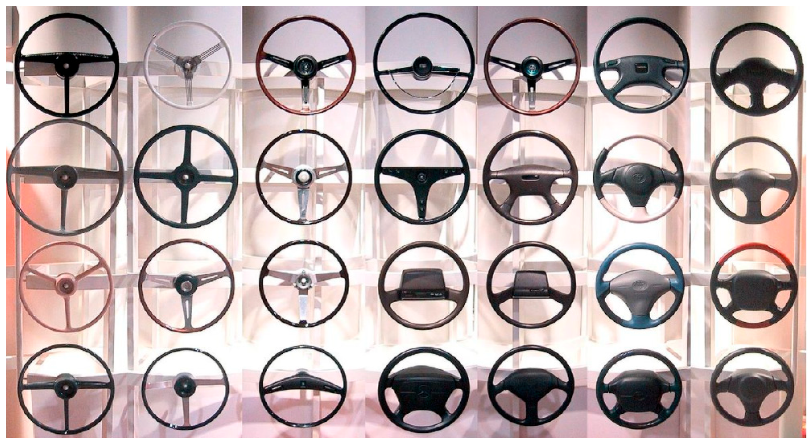
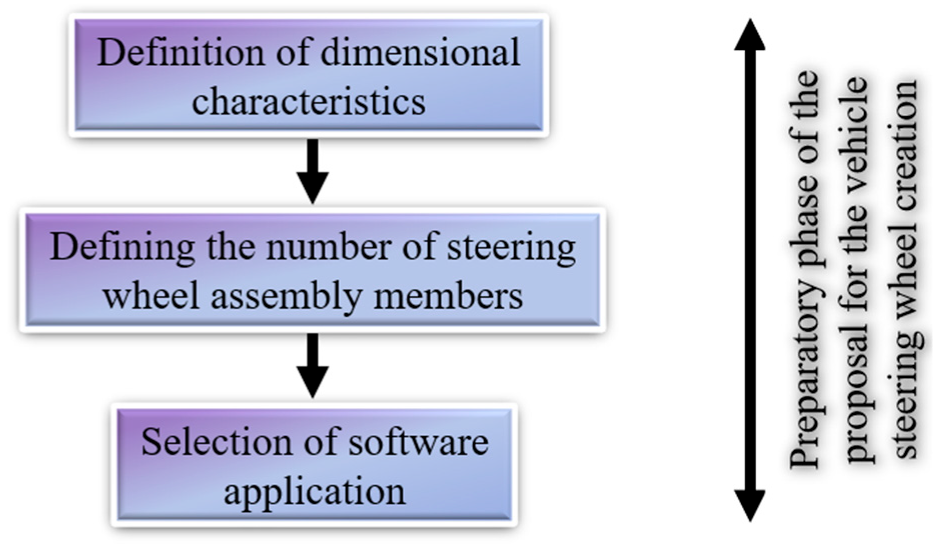
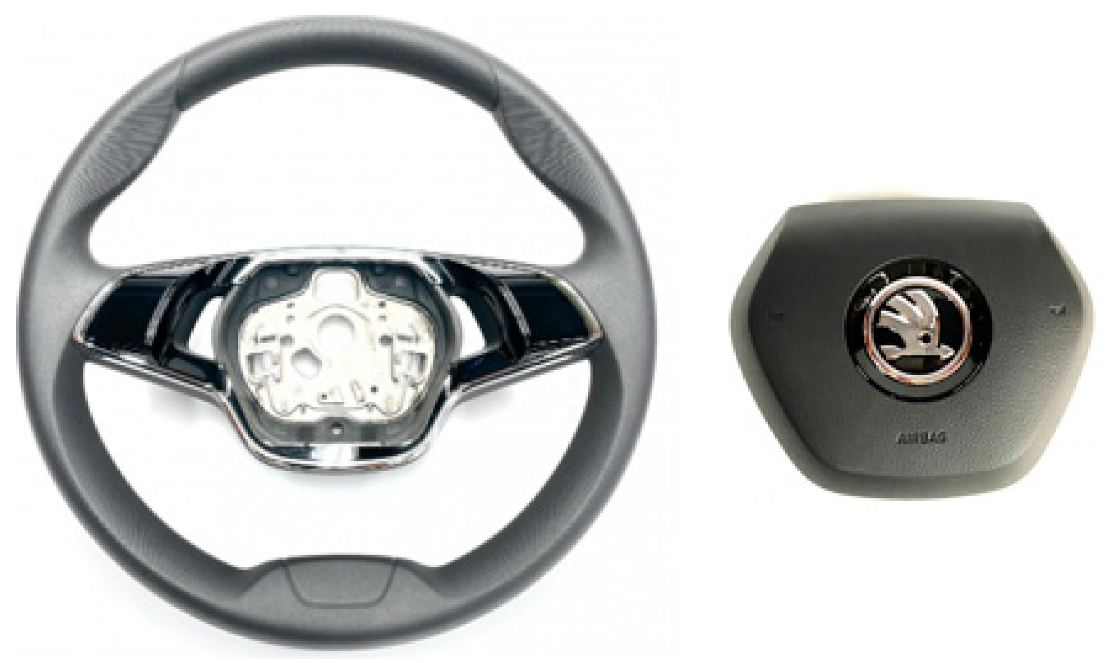
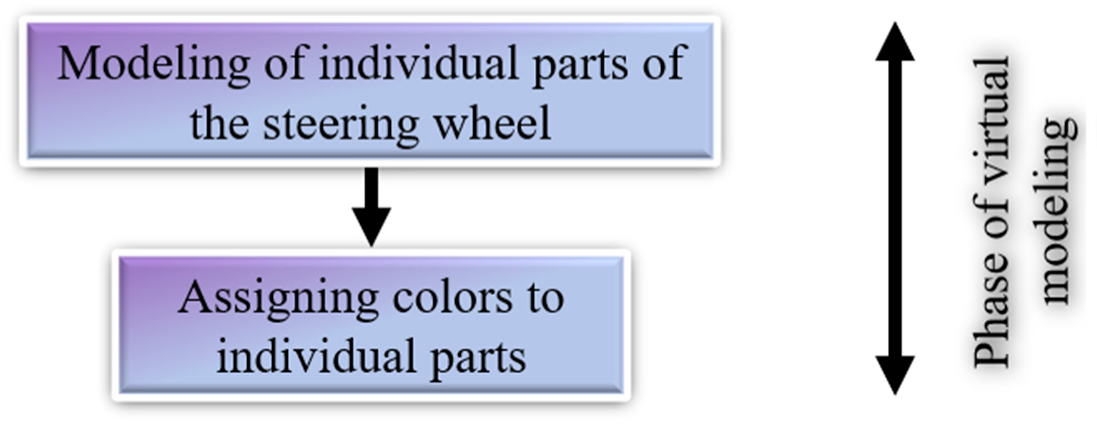

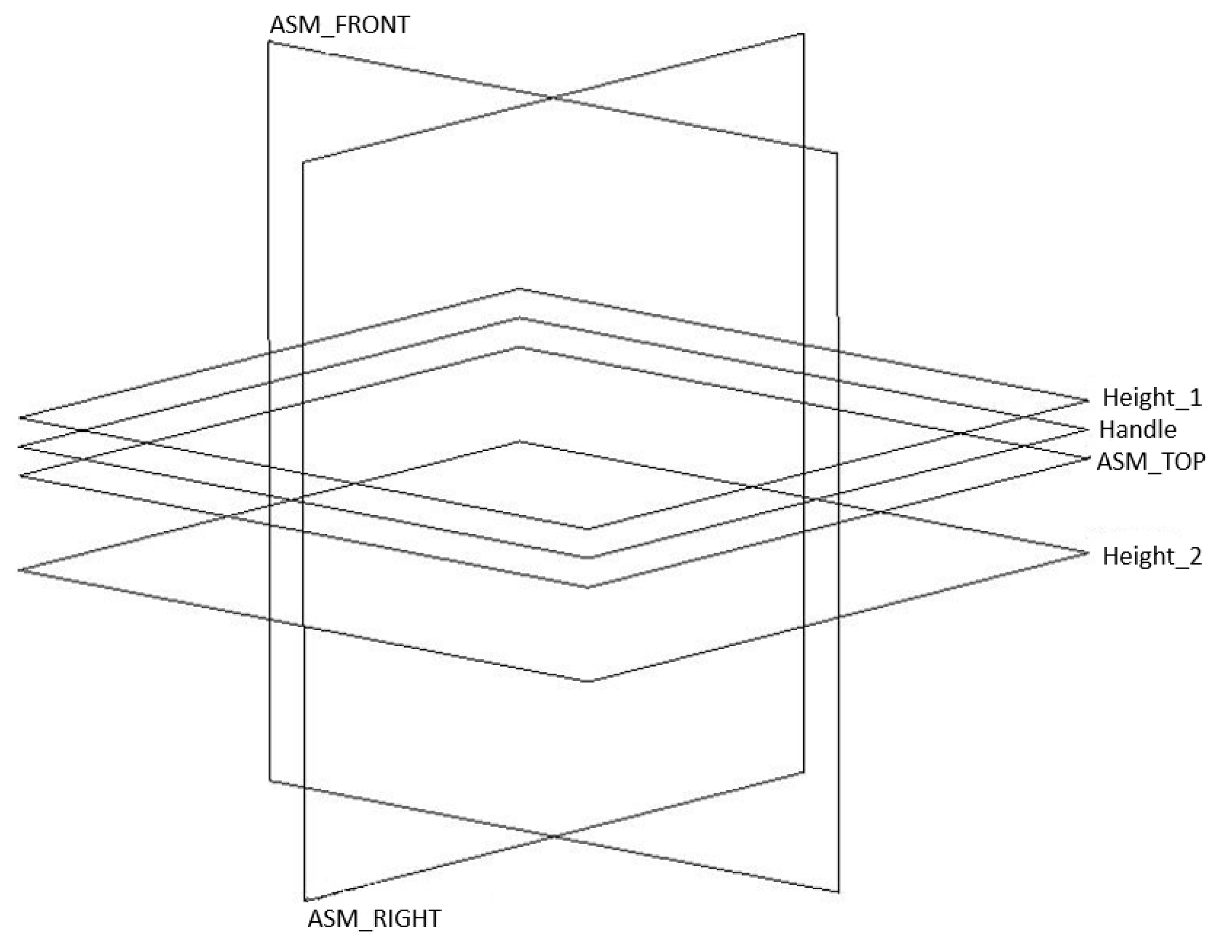
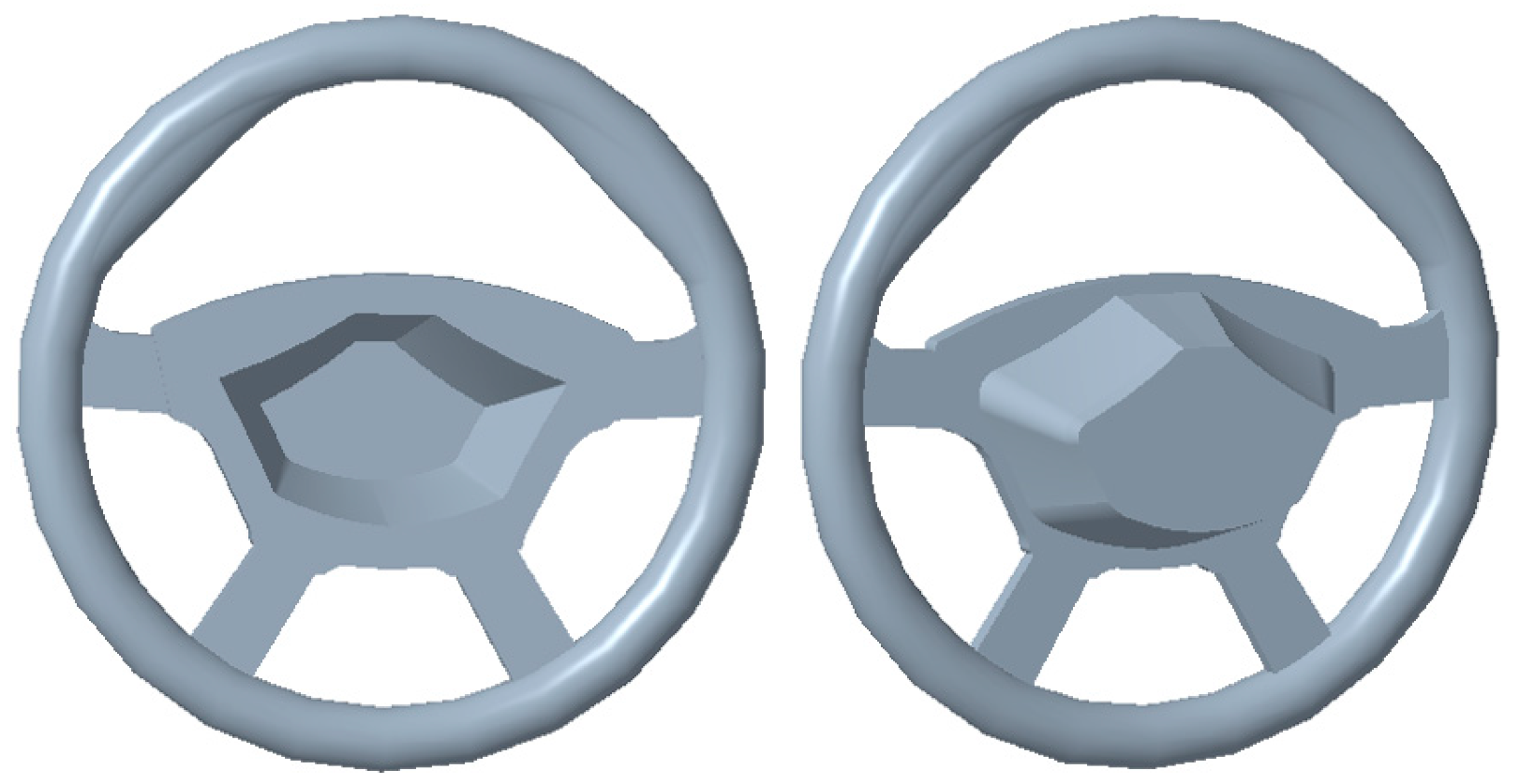
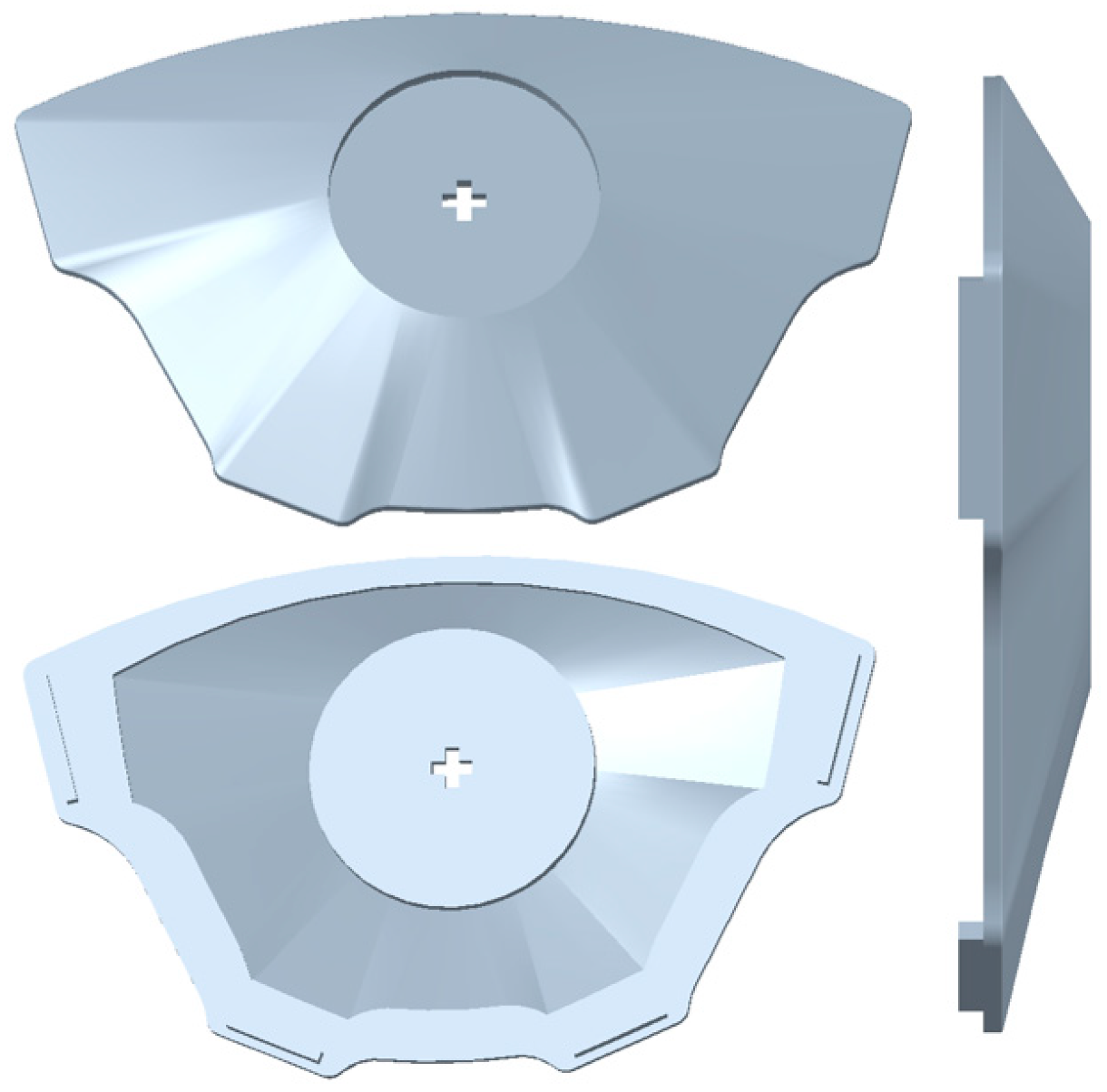

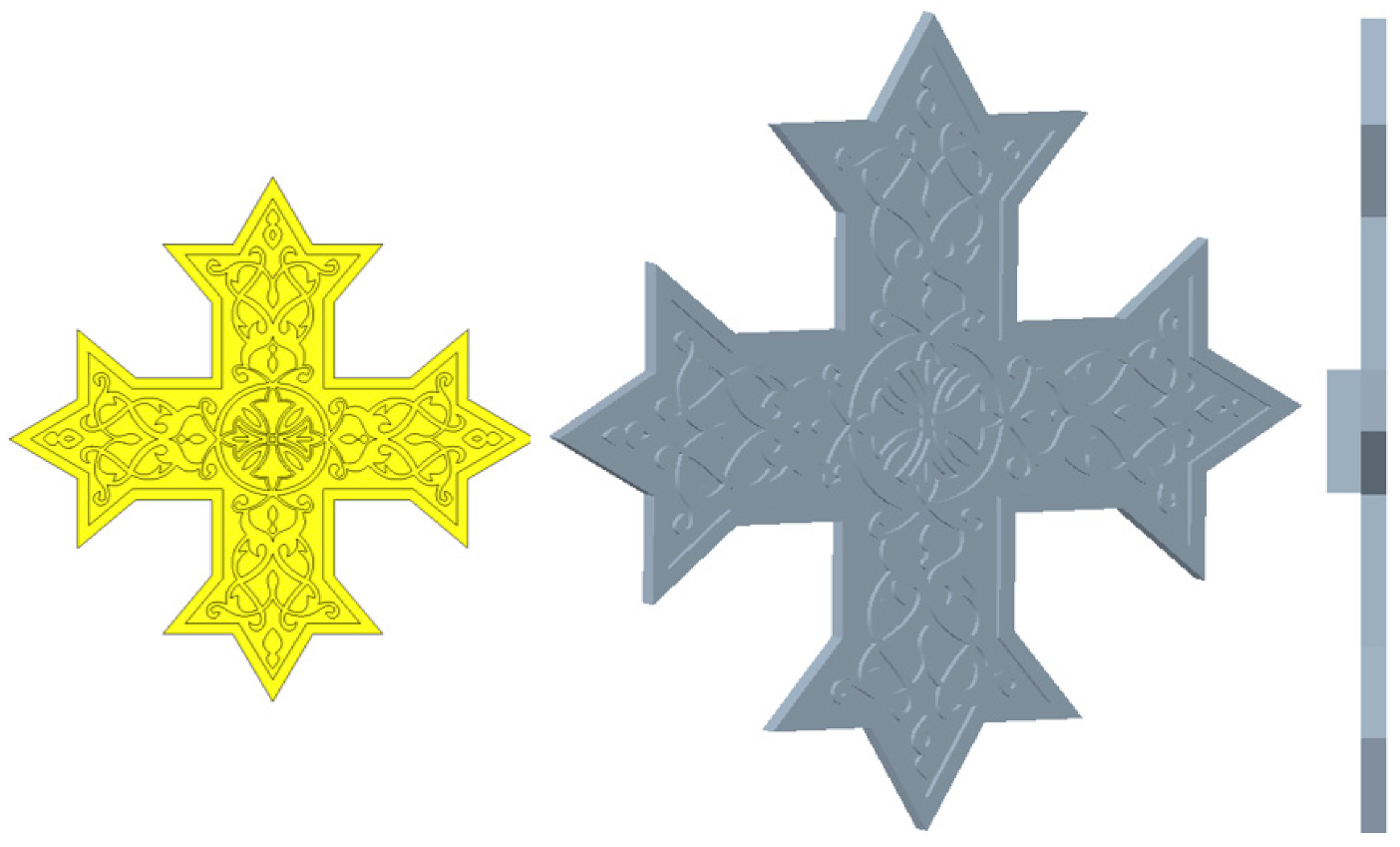

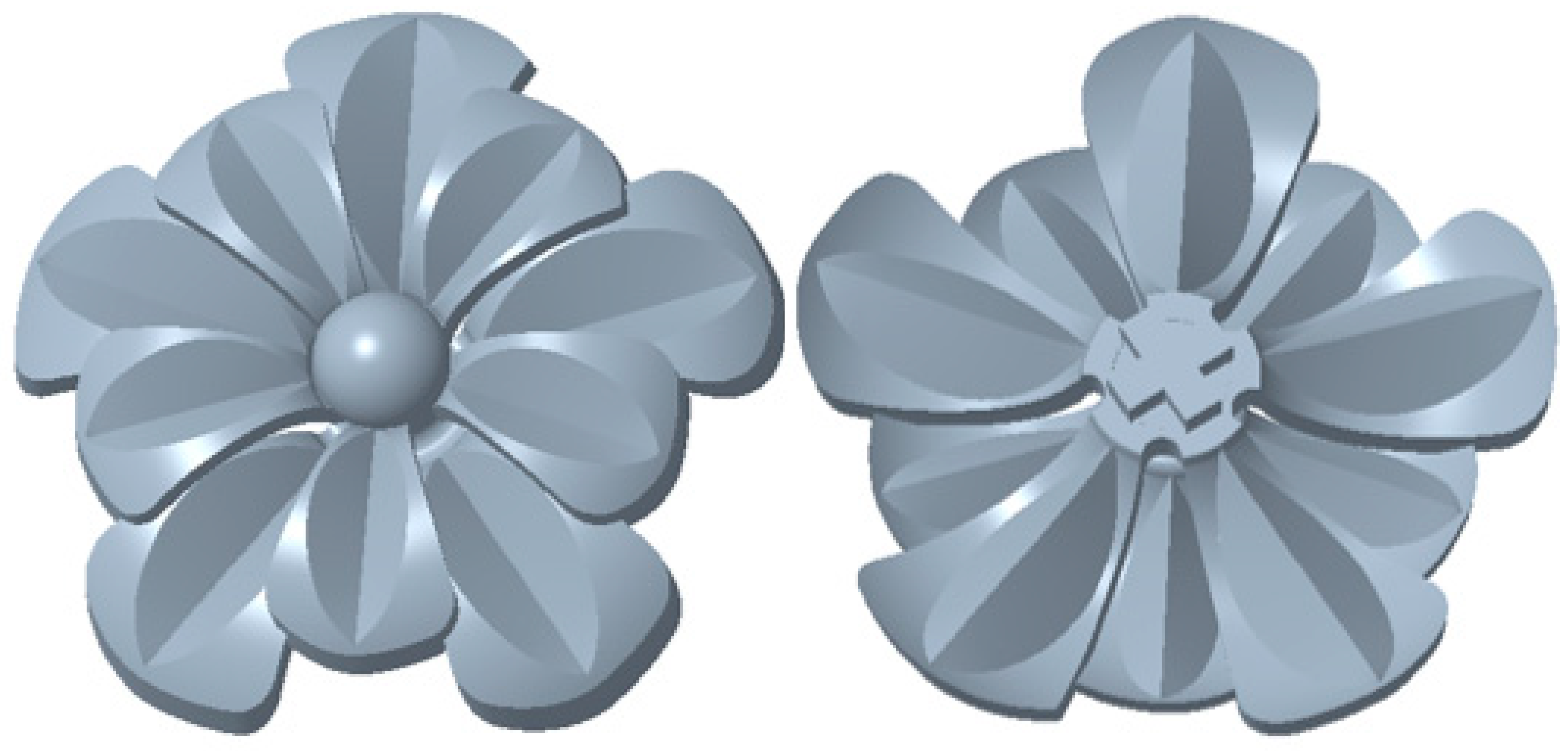
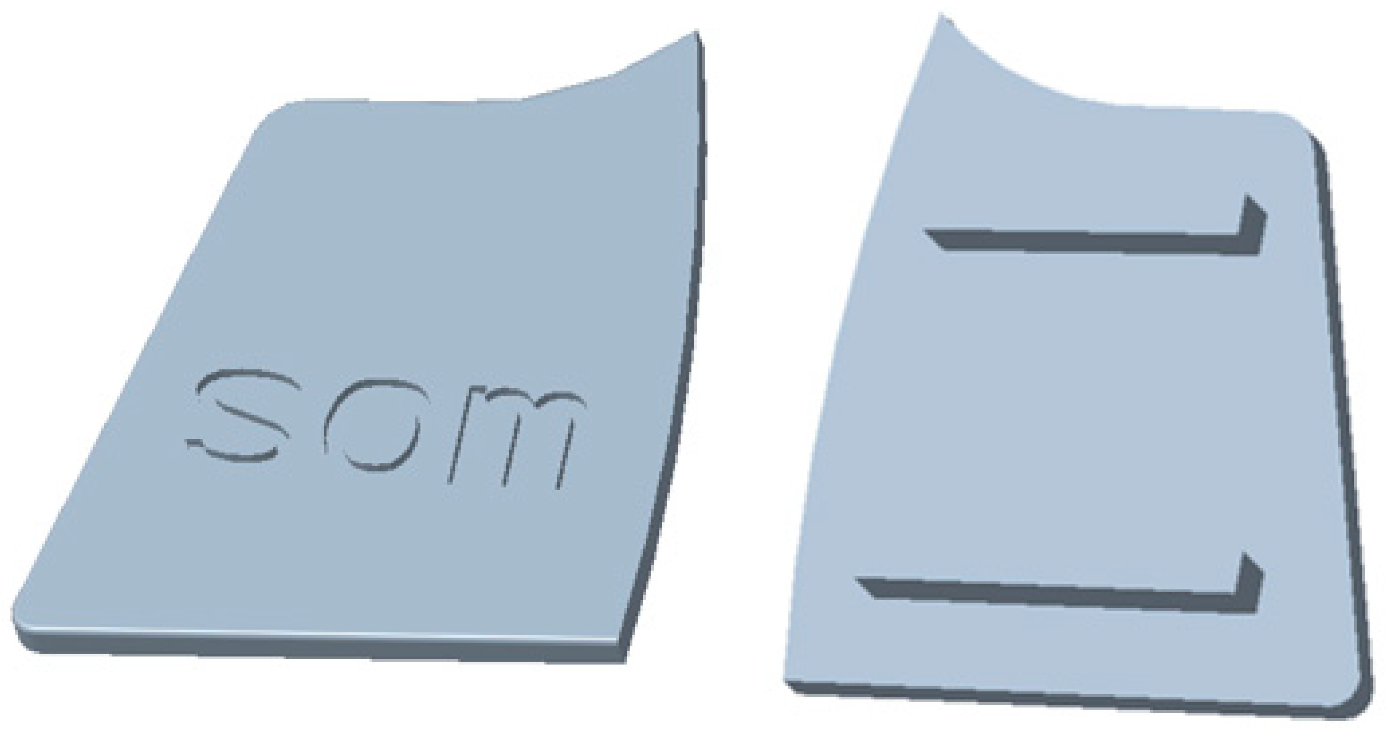
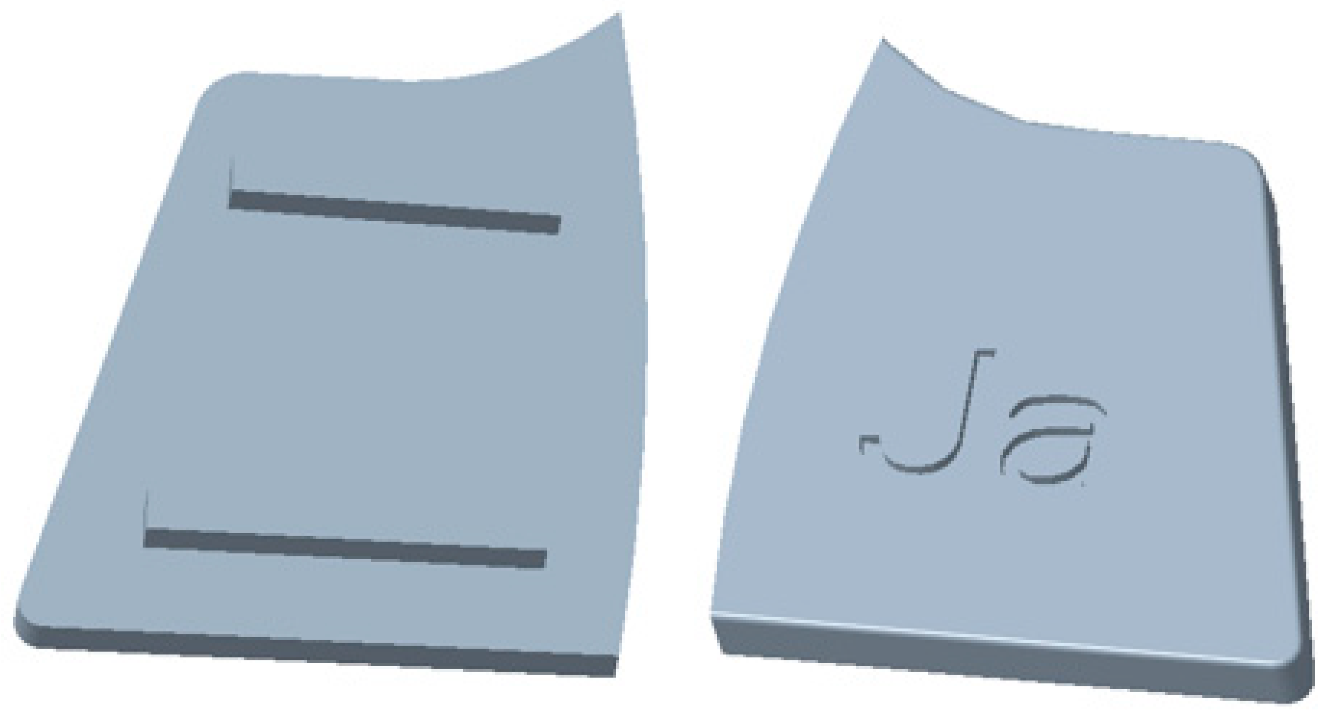
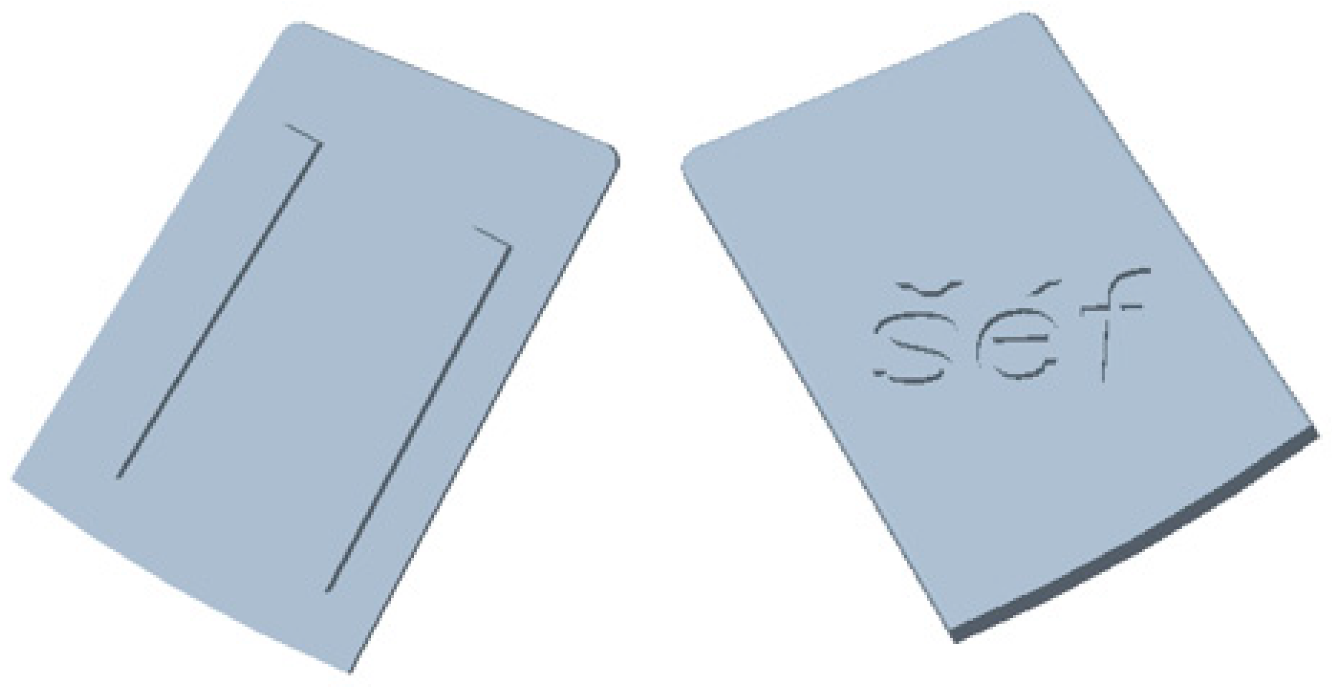
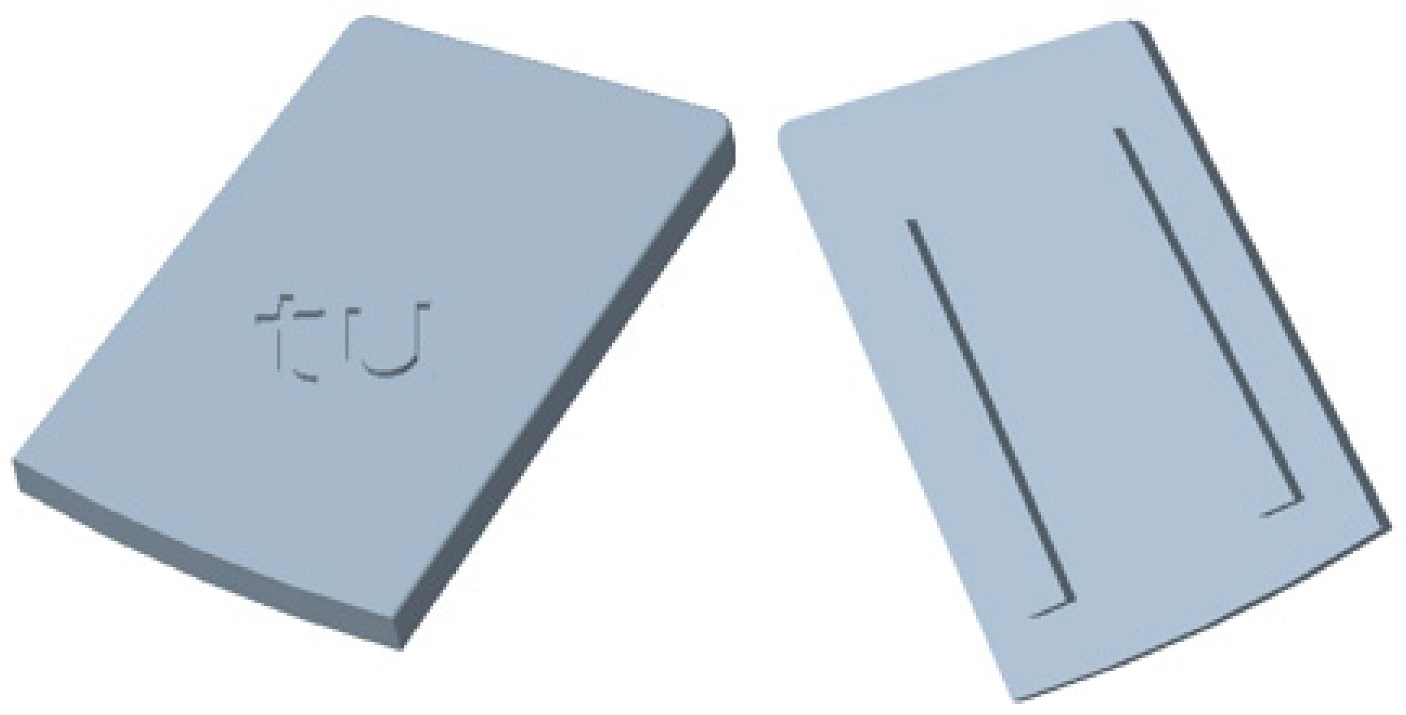
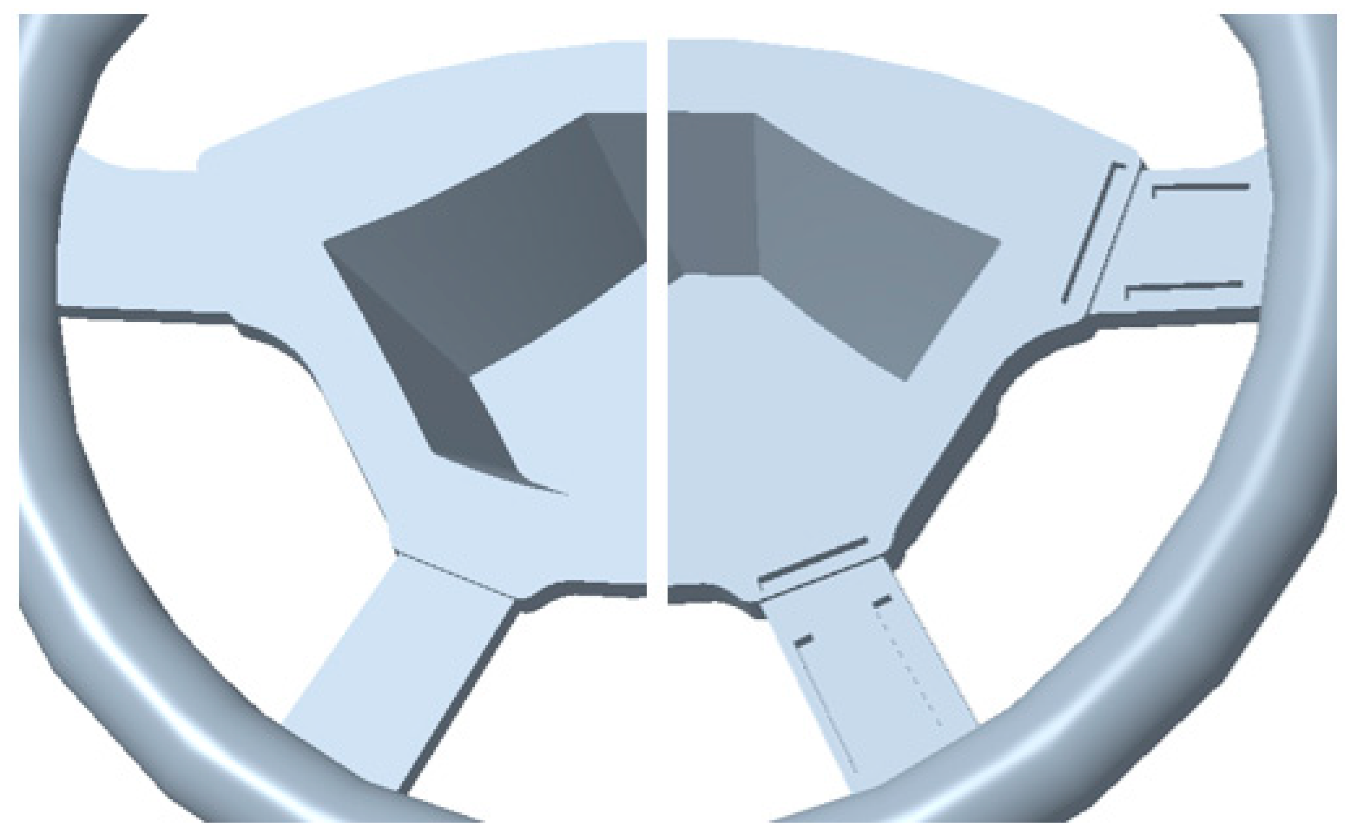
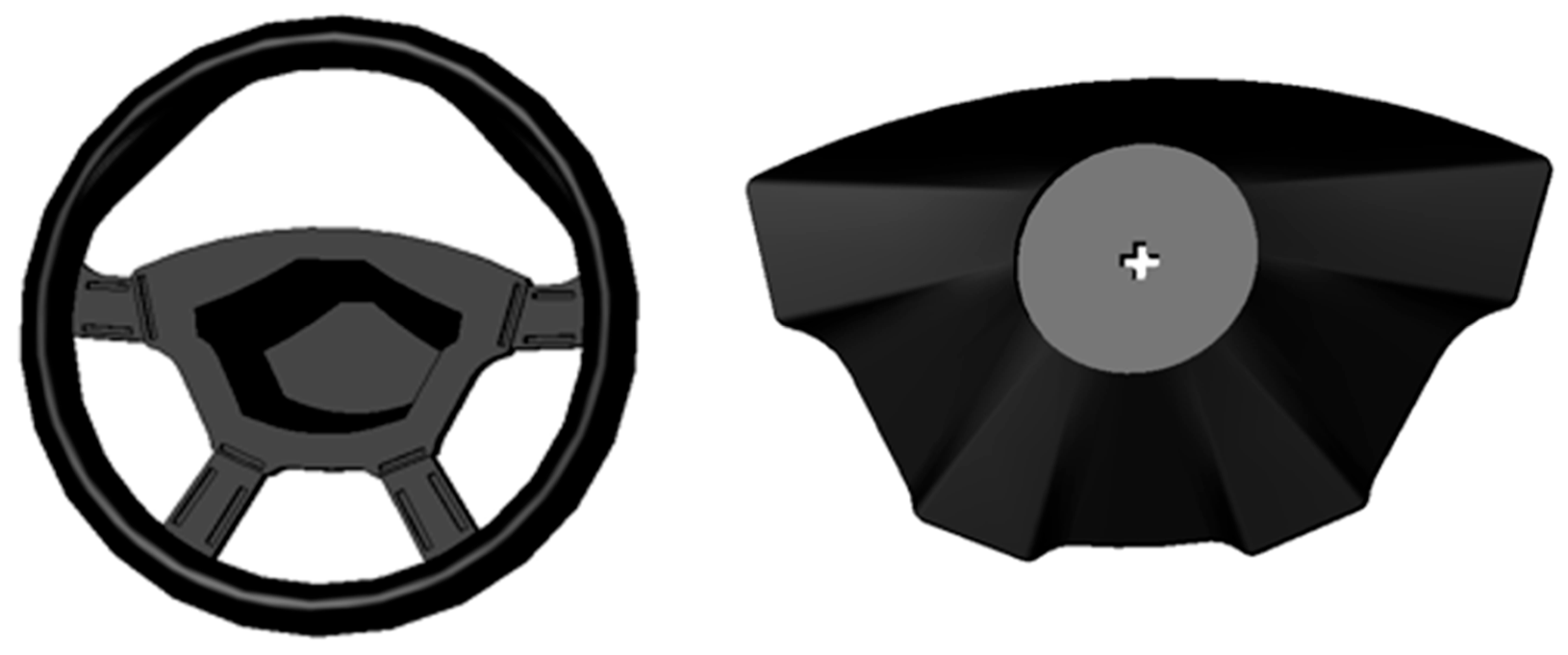
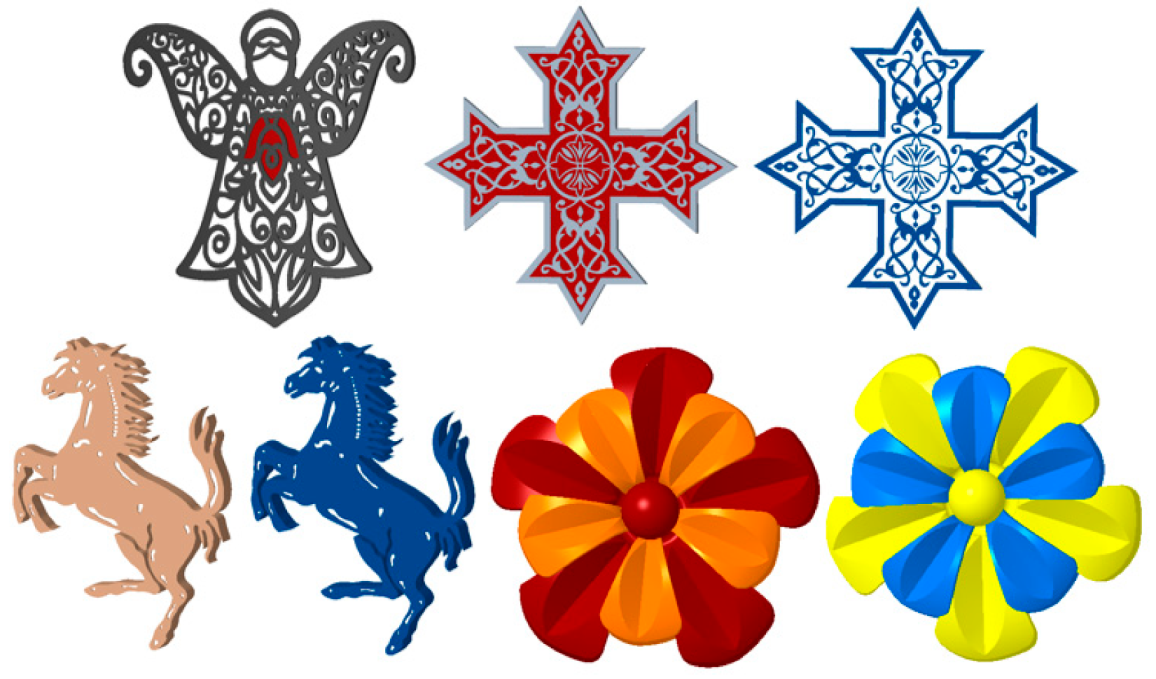

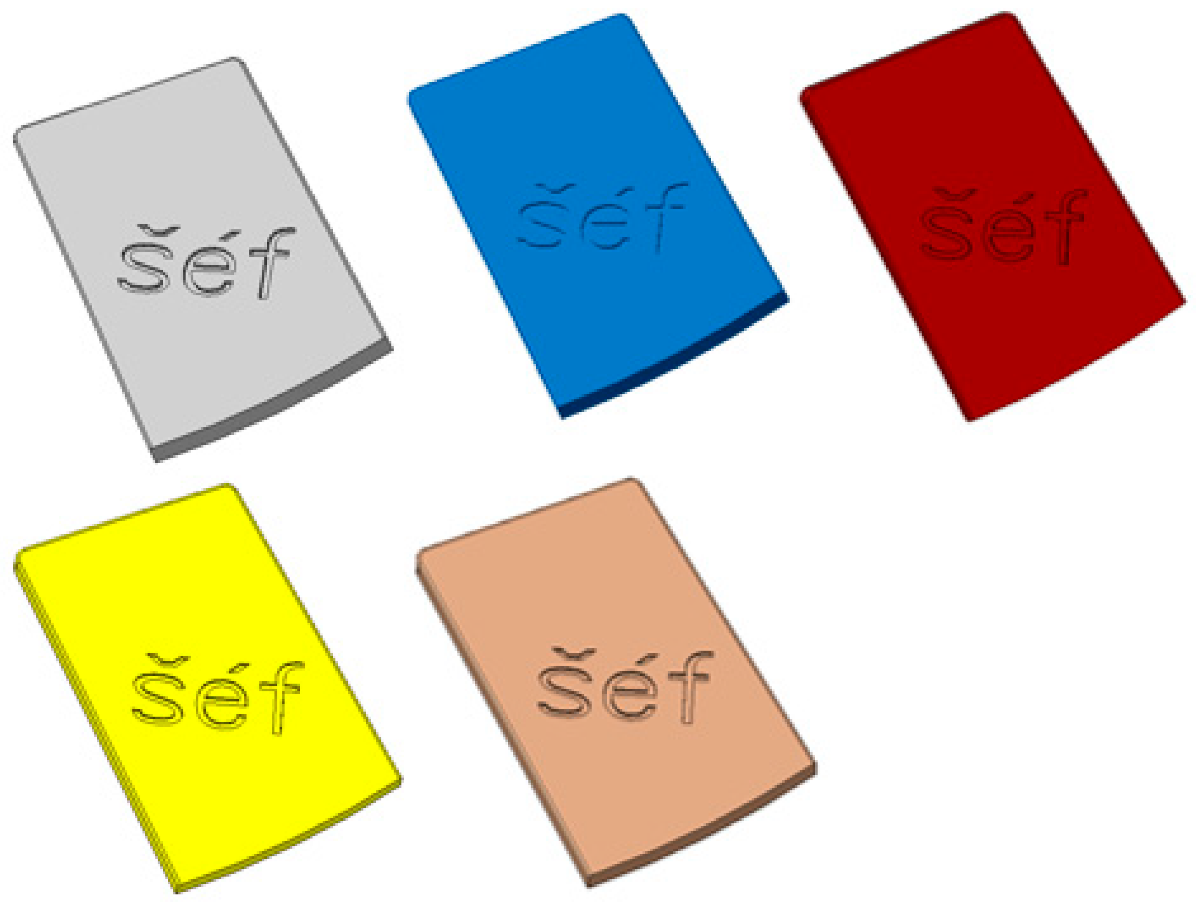
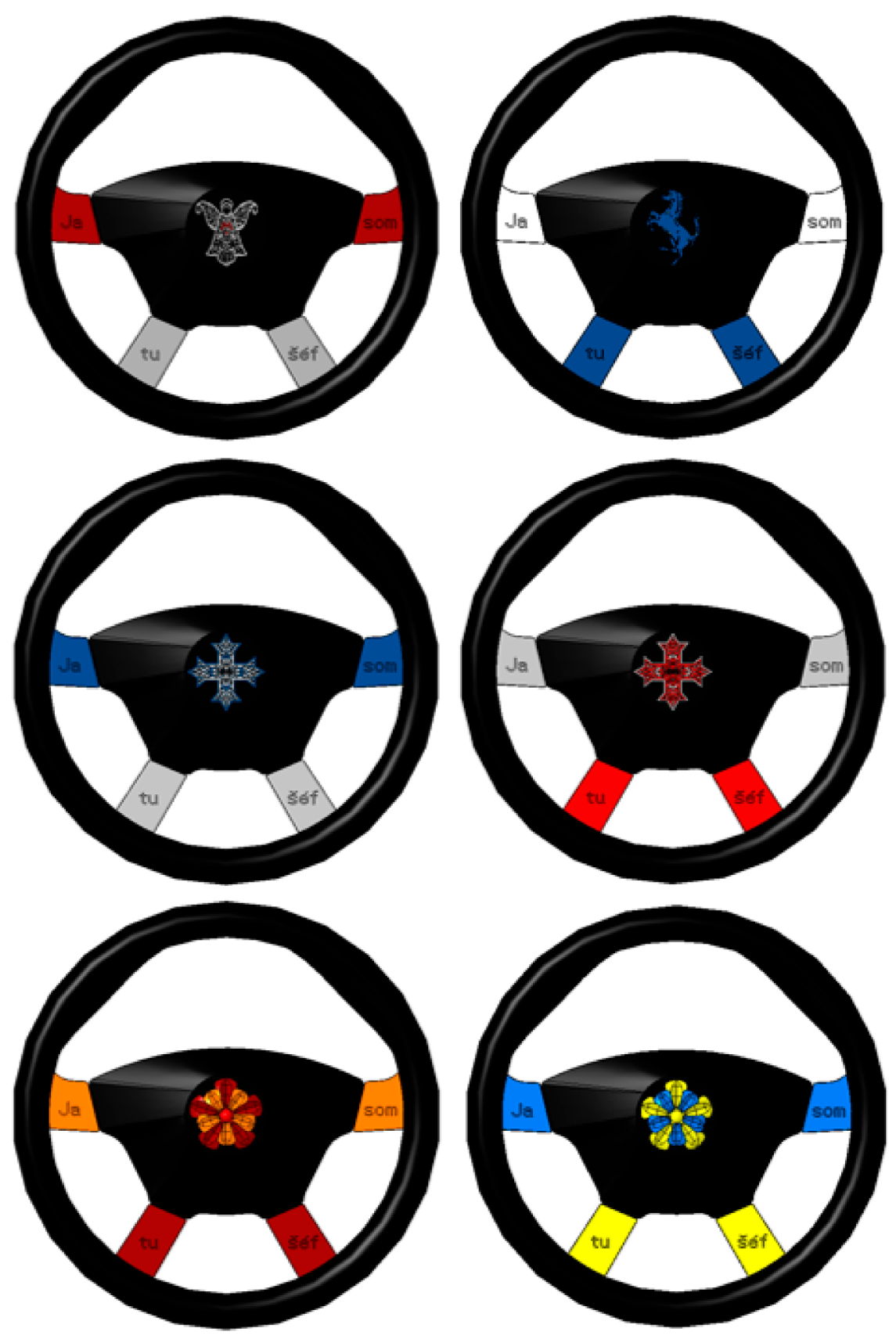
| Vehicle | Outer Diameter (cm) | Total Height (cm) | Handle Circumference (cm) | Cover Presence |
|---|---|---|---|---|
| MPV/Van | 37.6 | 11.9 | 10.7 | Yes |
| SUV | 39.3 | 12.3 | 10.9 | Yes |
| Sedan | 37.4 | 11 | 10.6 | No |
| Hatchback | 37.2 | 11.7 | 10.3 | No |
| Sedan nr. 2 | 38.3 | 11.6 | 10.9 | No |
| SUV nr. 2 | 36.5 | 8.5 | 10 | No |
| Total Number of Assembly Members | 5 | 6 | 7 |
|---|---|---|---|
| Bottom part | 1 | 1 | 1 |
| Top part | 1 | 1 | 1 |
| Central decorative part | 1 | 1 | 1 |
| The number of arms of the lower part, affecting the number of decorative parts | 2 | 3 | 4 |
Disclaimer/Publisher’s Note: The statements, opinions and data contained in all publications are solely those of the individual author(s) and contributor(s) and not of MDPI and/or the editor(s). MDPI and/or the editor(s) disclaim responsibility for any injury to people or property resulting from any ideas, methods, instructions or products referred to in the content. |
© 2023 by the authors. Licensee MDPI, Basel, Switzerland. This article is an open access article distributed under the terms and conditions of the Creative Commons Attribution (CC BY) license (https://creativecommons.org/licenses/by/4.0/).
Share and Cite
Fandáková, M.; Palčák, M.; Kudela, P. Methodology Proposal and 3D Model Creation of a Car Steering Wheel. Appl. Sci. 2023, 13, 8054. https://doi.org/10.3390/app13148054
Fandáková M, Palčák M, Kudela P. Methodology Proposal and 3D Model Creation of a Car Steering Wheel. Applied Sciences. 2023; 13(14):8054. https://doi.org/10.3390/app13148054
Chicago/Turabian StyleFandáková, Miriam, Michal Palčák, and Pavol Kudela. 2023. "Methodology Proposal and 3D Model Creation of a Car Steering Wheel" Applied Sciences 13, no. 14: 8054. https://doi.org/10.3390/app13148054
APA StyleFandáková, M., Palčák, M., & Kudela, P. (2023). Methodology Proposal and 3D Model Creation of a Car Steering Wheel. Applied Sciences, 13(14), 8054. https://doi.org/10.3390/app13148054








